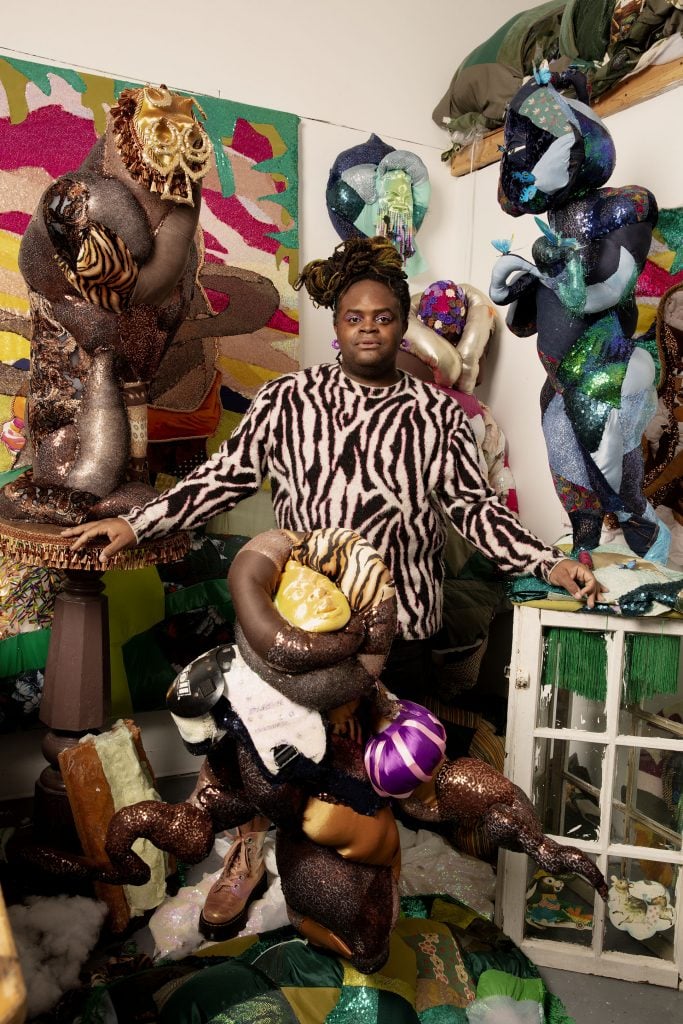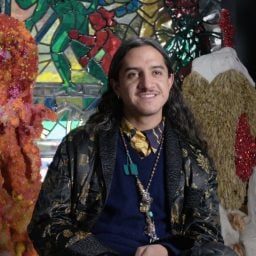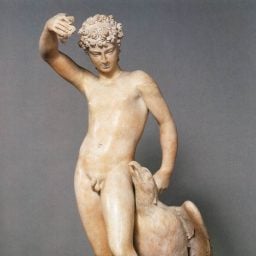The artist Trevon Latin used to hide his textile paintings from his professors as an undergraduate at the University of Houston. At the time, he thought fabric would not be welcome as a material in a studio practice.
Last week, he opened his first solo exhibition of paintings and sculptures made with sequined cloths and found textiles at Perrotin. “This work is 100 percent me,” he said, standing between his sculptures of mythological figures embodied in lushly textured fabrics, as well as sequins, tassels, and jewelry. “I’m building my own mythology, so earth doesn’t have to be green or the sky, blue.”
Latin is among a wave of contemporary queer artists revolutionizing different forms of craft—and, in doing so, subverting the traditions’ established notions of gender, hierarchy, and labor. Sewing, beading, tiling, and other practices that have long been undervalued are now being freed from stigma as they increasingly find space in institutional collections and white cubes, such as Perrotin, which offered Latin his solo debut after showing his work in their online Yale thesis show last summer.
When Latin first started his MFA, portraiture was central to his practice. Today, he channels his traditional learnings and inspirations into sewn paintings. “I still look at John Singer Sargent’s colors and stitch a painting from back towards the front,” he said. Aside from the Impressionists, nightlife has also had a critical impact on his visual language. The unapologetic vibrancy of the club scene proved to the artist the potential of his skill. Making his own masks and costumes for dance floors taught him how to tell a story with fabrics.
The show came to fruition during a five-month sewing process. Titled “Trinket Eater,” it features 18 pieces woven with found materials that date back as far as a decade. “This tarp is from a walk I took around my university campus in Houston,” he said, pointing at one of the works stretched onto a circular panel. His subjects range from classmates to characters from Scandinavian folklore, and even himself. “There are many variations of myself here, a boy or a girl,” he said.
From a kid stitching outfits for his action figures to an artist exhibiting an international powerhouse, Latin has always reached out to fabrics for self-expression. “I just needed to find my right color of fabrics and sew my stories in three-dimensional surface.”
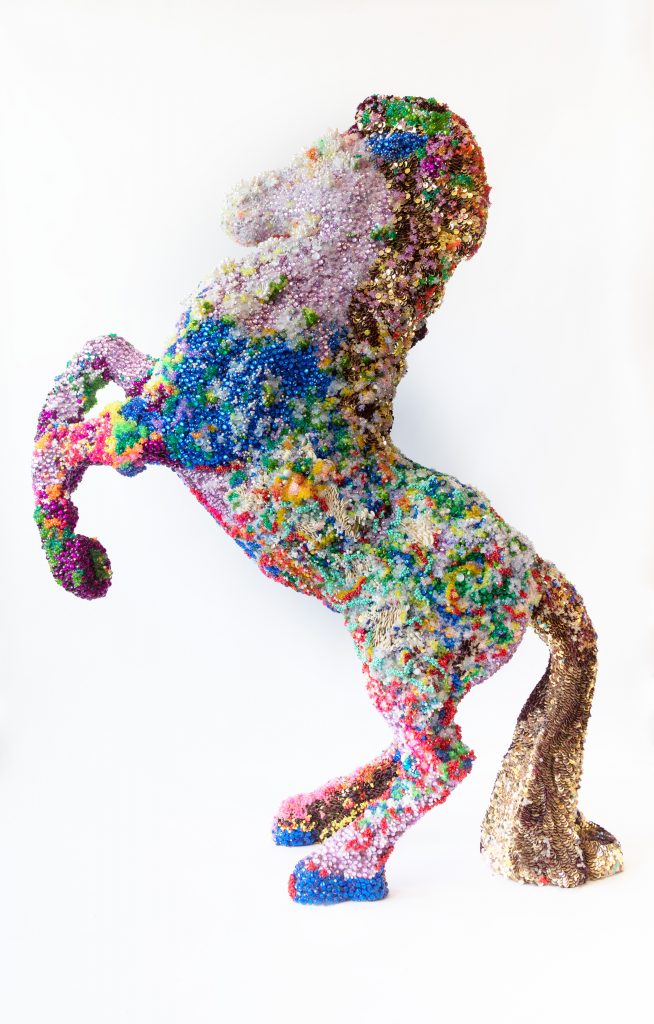
Raúl de Nieves, The Fable (2021). Courtesy the artist and Company Gallery, New York. © Raúl de Nieves.
Finding a Vocabulary of One’s Own
While fabrics made Latin an author of his own universe, beads possess a transformative power for Raúl de Nieves.
The artist’s joyous beaded sculptures gloriously interrupted the dominant pristine aesthetic codes of contemporary sculpture after they were included in MoMA PS1’s Greater New York survey in 2015, and in the Whitney Biennial in 2017. The artist started making beads in high school and went on to attend, and then drop out of, the California College of the Arts. “Just like the beads, things had to accumulate,” he said. A shoe with a broken heel or a life-sized horse rearing up, the objects he encrusts with beads transverse different worlds. “Putting that last bead on is a moment of revelation.”
Similar to a painter’s brushstrokes over canvas, de Nieves covers his surfaces with colorful beads in impossible density—“No spot left uncovered!” This repetitiveness, in fact, offers the artist a territory of self-exploration. “The world is full of impossibilities, so why not take on an endeavor that seems impossible?” he asked.
De Nieves is currently working on a solo exhibition at the Institute of Contemporary Art Boston in September titled “The Treasure House of Memory.” Two human figures, one beaded entirely in white and the other in black, will have gushes of rainbow flowing out of their stomachs. “A gay astral projection,” he mused about his habit of attributing fearless loads of queerness into institutional contexts.
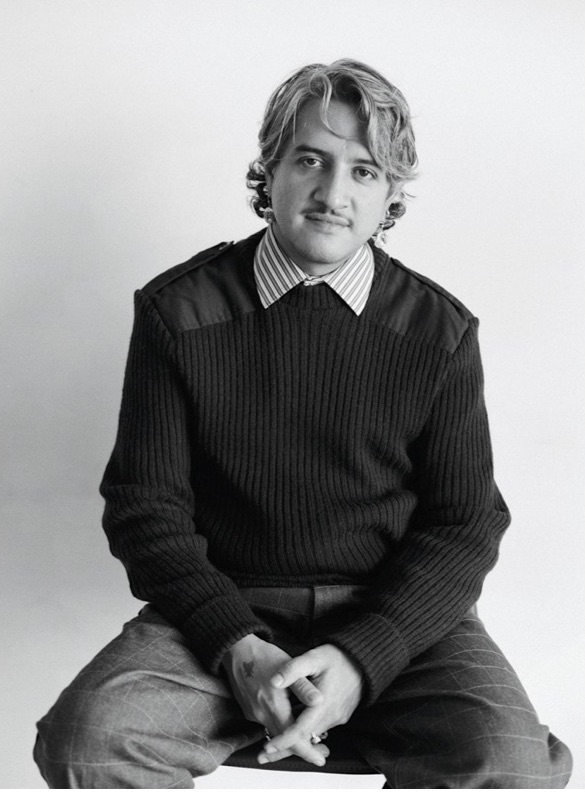
Raul de Nieves. Photo: Rafael Martinez.
Growing up in Michoacán, Mexico, de Nieves witnessed beading and other craft traditions being passed between generations. His late father was known as the town’s master leather maker, while his grandfather was a sign painter. “Time pushes you into doing something you’re born for and you slowly build a vocabulary for it,” he said. After moving to the U.S. as a child in 1993, de Nieves gradually learned to express his gay identity through beading. “Queerness is about not conforming, but the beauty is in developing a language with one’s self-awareness for their identity.”
The performance and club scenes are also instrumental for de Nieves, whose former studio was beneath Bushwick’s beloved queer club Spectrum. “Curators visiting my studio loved hearing about the party a night before,” he laughed. “Nightlife has shown me self-respect.”
He also looks to the clothing and volume of classical painting. “I am in search of creating movement through volume, too.” Over the years, he has perfected the creation of waves of texture and color through billowing configurations of beads. His show at ICA Boston will also include a massive tapestry made out of Xerox cutouts, personal photographs, and pieces of Paul Klee postcards from the Guggenheim gift shop. “It’s all about using whatever is in hand—making do has always been a part of queer artists.”
The metamorphic gesture in the work of de Nieves, Latin, and other artists is, in fact, queer in nature. The inherent anarchism of a non-conforming aesthetic finds its power by defying the status quo. A desire to build alternative realities amid a heteronormative order has long pushed artists to dismantle norms and construct worlds anew. Injecting craft into the sterility of high art not only breaks common optic codes of refinement, but also carves out visibility for centuries-old techniques that have long been practiced in the seclusion of living rooms or factories
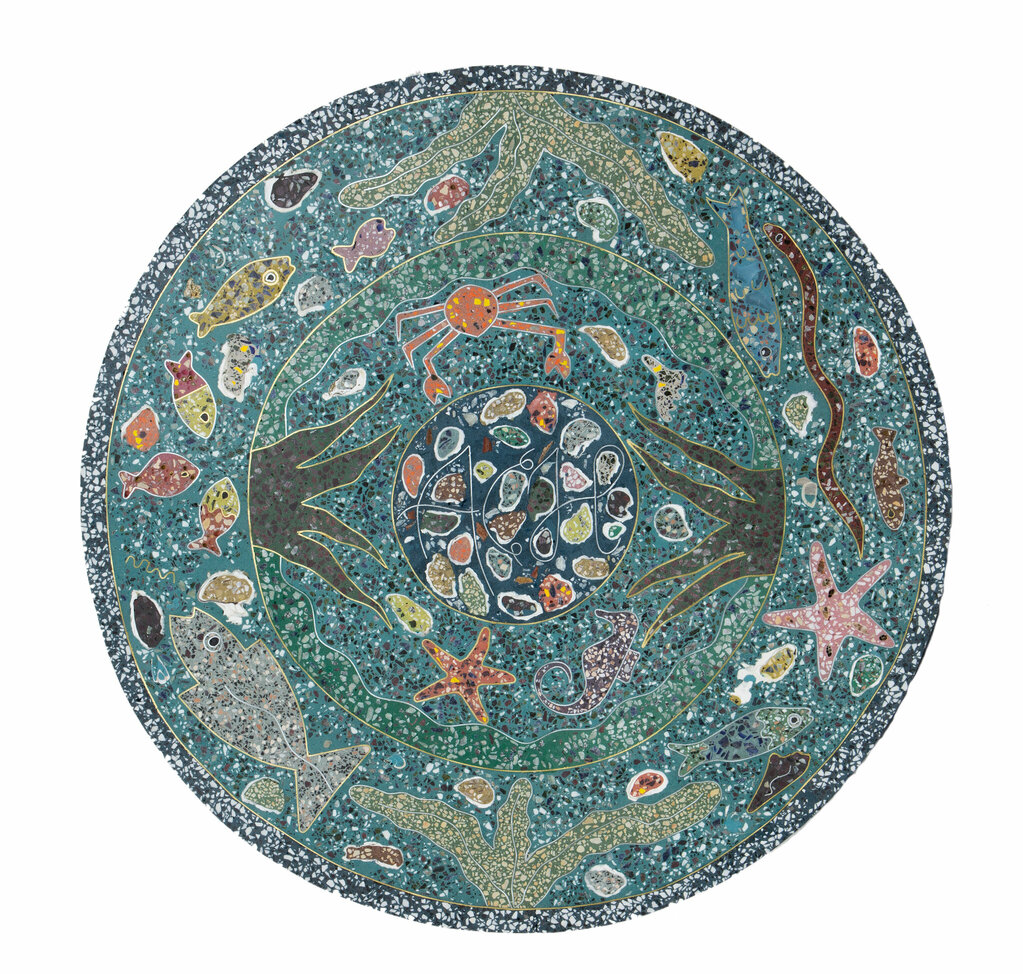
Ficus Interfaith, Adam Charlap Hyman Commission (2021).
Dismantling Old Distinctions
A commitment to material is also key for the artist duo Ficus Interfaith, composed of Ryan Bush and Raphael Martinez Cohen. After the pair met in the painting department at the Rhode Island School of Design six years ago, they were, “punching in darkness” to find a material that could respond to their desire to create painting and sculpture hybrids.
The gentle authorship of Felix Gonzales-Torres and folk art were initial inspirations. “We wanted to marry craft with a conceptual approach, which gives the impression that the idea overcomes the skill,” they said. Terrazzo was the answer, and the duo soon taught themselves tiling in their backyard.
Terrazzo dates back to Neolithic age, but its resonance as a decorative accent in post-industrial America is what attracted the artists to the practice. “Art is defined as revelation, while producing something is considered craft—this is a distinction we try to dismantle.” They enjoy observing people’s reactions to discovering that they make the work themselves. “Imagine baking a cake—you never know how it’ll come out each time,” one says, but the other adds: “But this is a cake we’ve made so many times, so even mistakes are engineered.”
Mystery hard to maintain in our digital age, but for them, anonymity is part of their statement. “The work comes from our third identity,” they said.
The pair derived their professional name Ficus Interfaith from the fig tree genus and the allure of spirituality (which some may think of as the antithesis of biology). Terrazzo, a composite of bits of glass, marble, or granite, attracts the artists for its promise of permanence. But the material also contains a fluidity: a cement-like binder is poured over the chips to preserve the pattern in place.
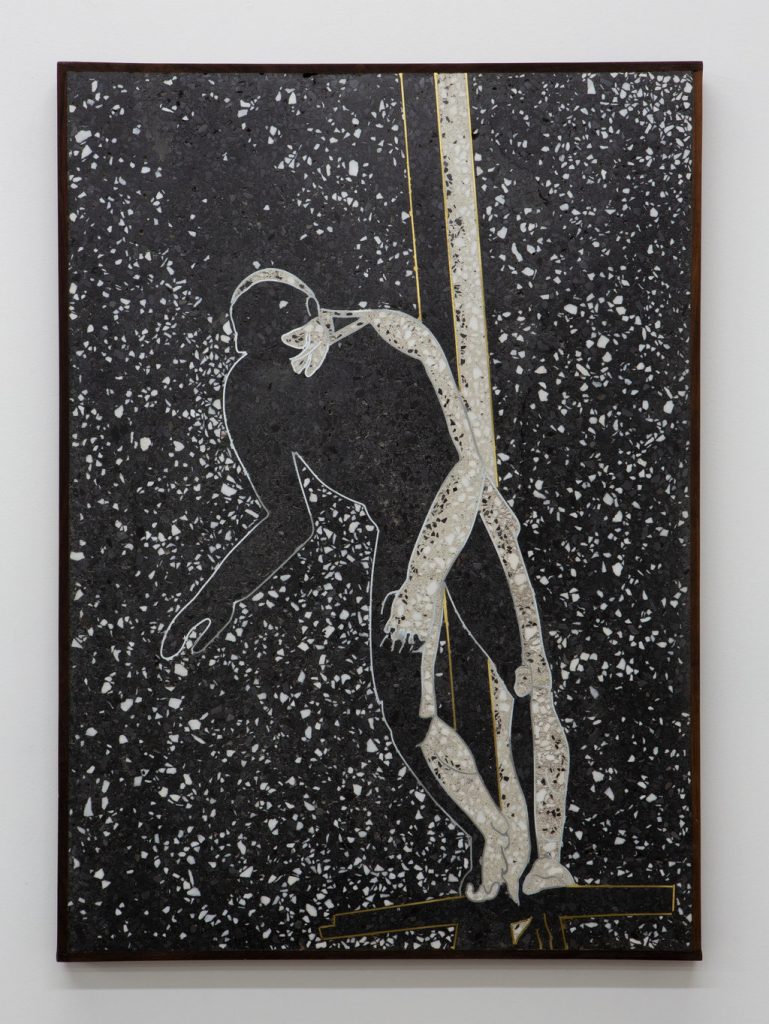
Ficus Interfaith, The Diver (After Rockwell Kent) (2020).
For their most recent show at Deli Gallery, the artists appropriated images by ad illustrator Rockwell Kent, which he designed for transportation companies in the 1930s—an era when terrazzo was frequently appearing in hotel lobbies and on federal buildings. And in a group show at P.P.O.W. last summer, they exhibited a more than 15-foot-wide Rauschenberg-style American flag, which was made out of countless broken bits. The artists say they see a parallel between queerness and rendering icons in stone: “Aesthetics and craft are both feminized characteristics.”
The artists intentionally seek out disparate and often iconic forms of imagery to contemplate queer aesthetics. Take the duo’s Instagram account as an example. Videos of beefy frat boys in unintentionally homoerotic acts and images of architectural marvels are peppered alongside process shots from their studio, or a freshly completed commission piece. They see the account as a collective mood board and site of documentation.
“Displaying homosocial behavior on the same platform with history, archeology, or anthropology speaks to our intention to decentralize queerness,” they said.
The pair works both within traditional gallery spaces and on design commissions. Seeing their work in a domestic setting gives breaks down the hierarchy between decoration and fine art. “Ultimately,” they said, “terrazzo is a floor material, which is meant to be walked on.”
